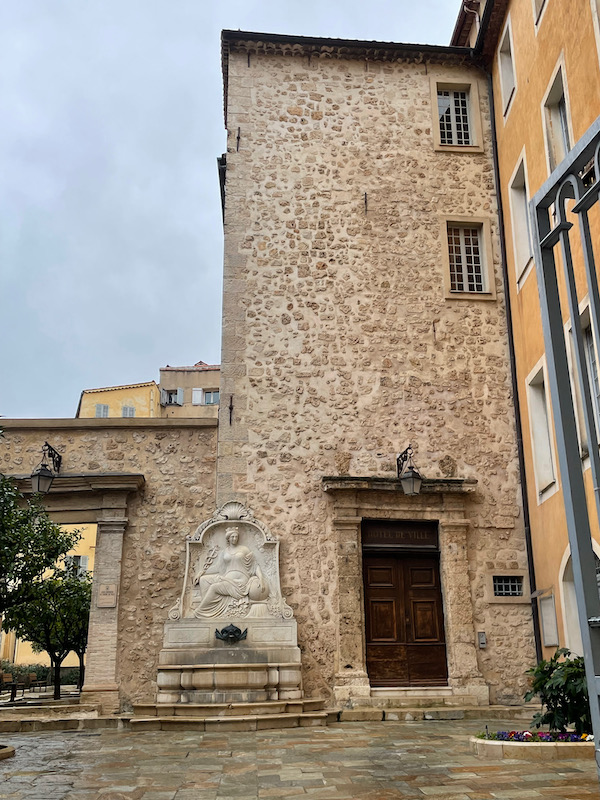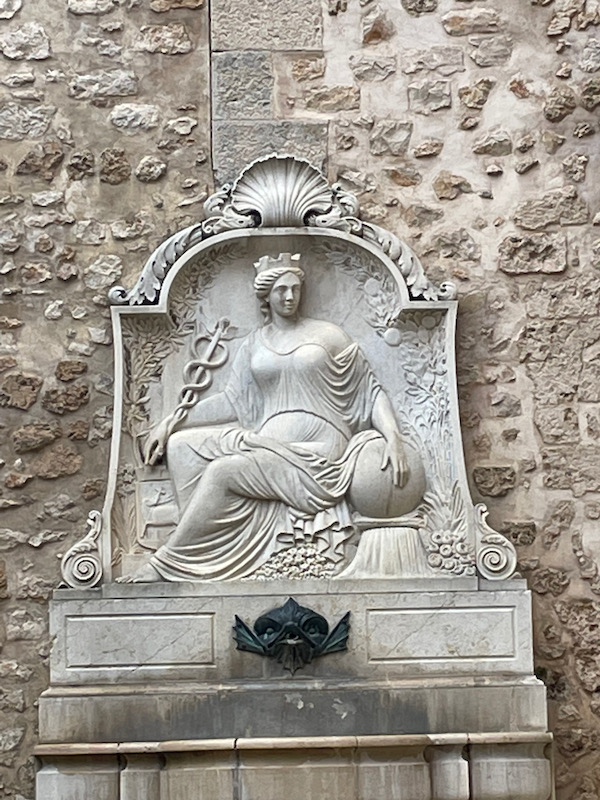Our Blog - Cote d'Azur - Grasse, France
Grasse is considered the world's capital of perfume and has prospered in the perfume industry since the end of the 18th century. Grasse produces over two-thirds of France's natural aromas (for perfume and for food flavorings). Jasmine, a key ingredient of many perfumes, was brought to southern France by the Moors in the 16th century. Twenty-seven tonnes of jasmine are now harvested in Grasse annually. The story on how it started in perfume was interesting ... In the Middle Ages, Grasse specialized in leather tanning. The tanned hides acquired a reputation for high quality but the leather smelled badly, something that the glove-wearing nobility didn't really like. A tanner in Grasse came up with the idea of scented leather gloves and offered a pair to Catherine de Medici, who was seduced by the gift. Thereafter, the product spread through the Royal Court and high society, and this is how the reputation for Grasse and perfume started.
We did a guided tour (in French) along with a make-your-own-perfume workshop at the Molinard perfumery, which is one of the oldest perfumers in the world. It was established in 1849 and has been in the same family for 5 generations. The building in Grasse has a metal frame in the distillery that was designed by Gustave Eiffel (of the Paris Eiffel Tower). During the tour, they explained the various things that are distilled to create the fragrances that are put together to make a perfume. These include grains, roots, flours, etc. Then in the distillery, she explained the various methods that are used to extract/distill the aroma from the product.

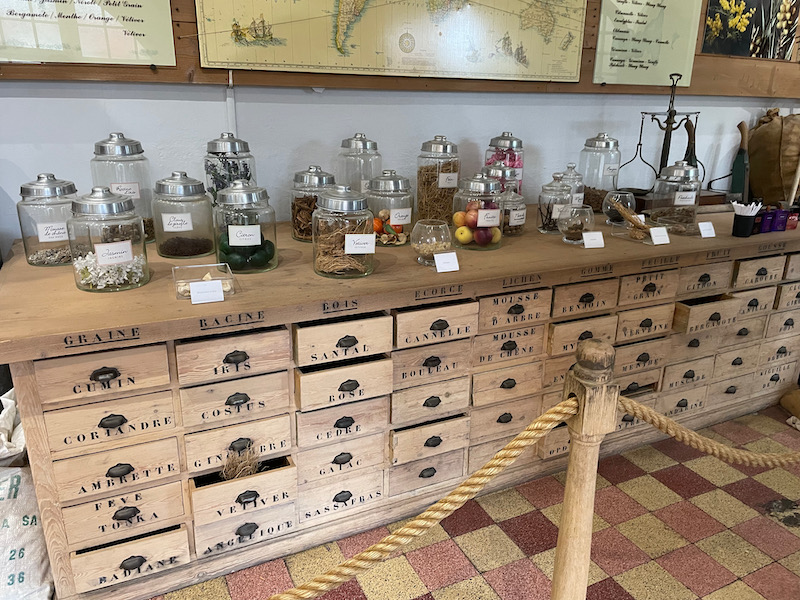
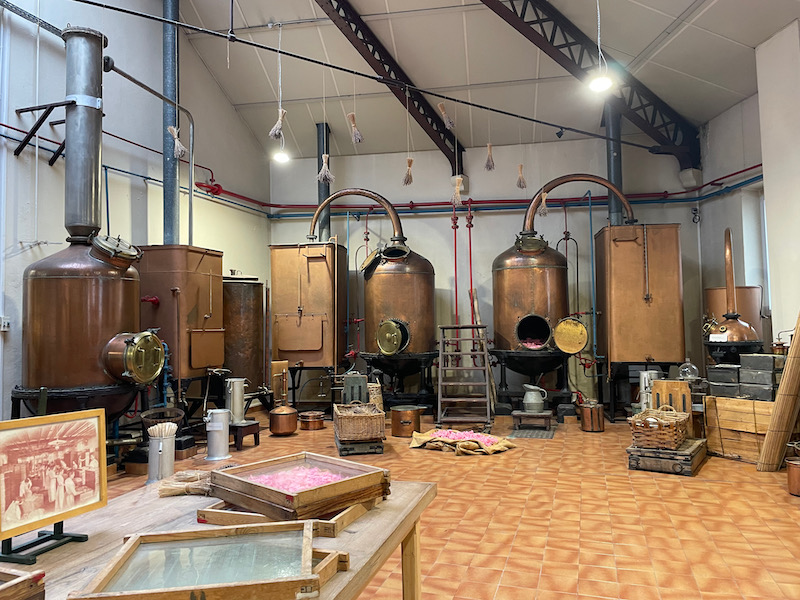
This is only 1 of several frames that include labels from different products throughout the history of the perfume house.
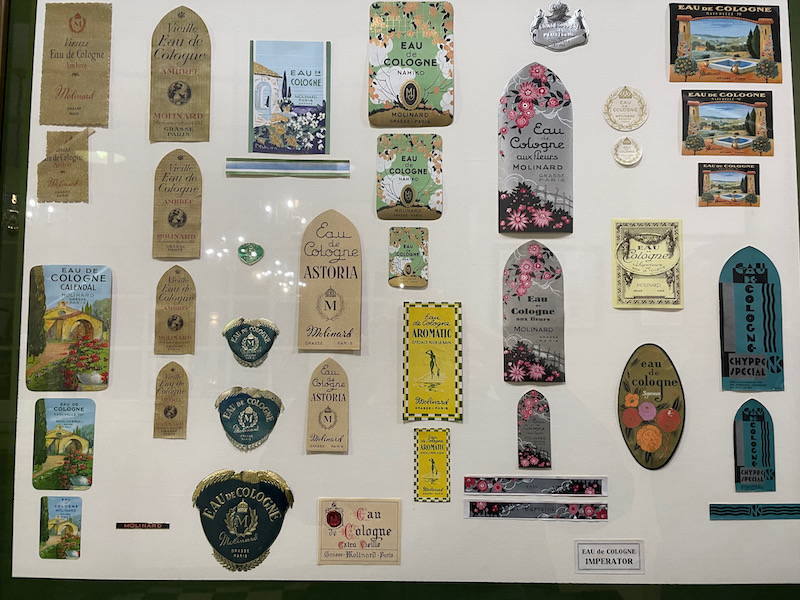
Then the workshop ... we did the shortest workshop since I didn't think Tom wanted to do a 2-hour workshop on perfume. We started with this pyramid, where they explained the 3 parts that make up all perfumes and you can find information on the pyramid on the website of almost all of the major perfume houses. There is the "head" note, which is the lightest and stays for only about 15-20 minutes. This is what you smell when you spray your perfume. Next is the heart" note, which normally you don't smell when you first spray the perfume, but appears 20-30 minutes later as the head-note evaporates. This one stays 4-6 hours. On the bottom is the base note, which stays on your skin up to 24 hours. As a quick example of a collection of these notes in their perfumes, there is one called "Ecoute-moi" (Listen to me) created in 1997 that is a combination of marigold, mandarin orange, bitter orange, rose, jasmine, ylang-ylang, benzoin and raspberry. One of their most famous, called "Habanita", was created in 1921 and is a collection of geranium, lentisk, petitgrain, vetiver, jasmine, rose, oakmoss, sandalwood and amber.
We did our little workshop at the "Fragrance Bar". You get to select 1 base and 3 other notes, that you mix together yourself in a little perfume bottle. Then you get to take your creations home in a the spray bottle. The more involved workshops allow you to select from 99 different "notes", which to me would have been overwhelming.
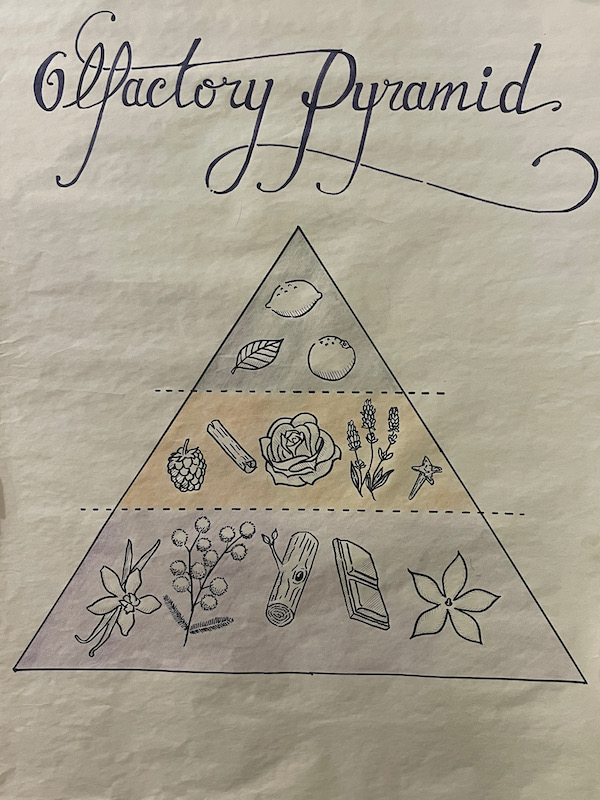
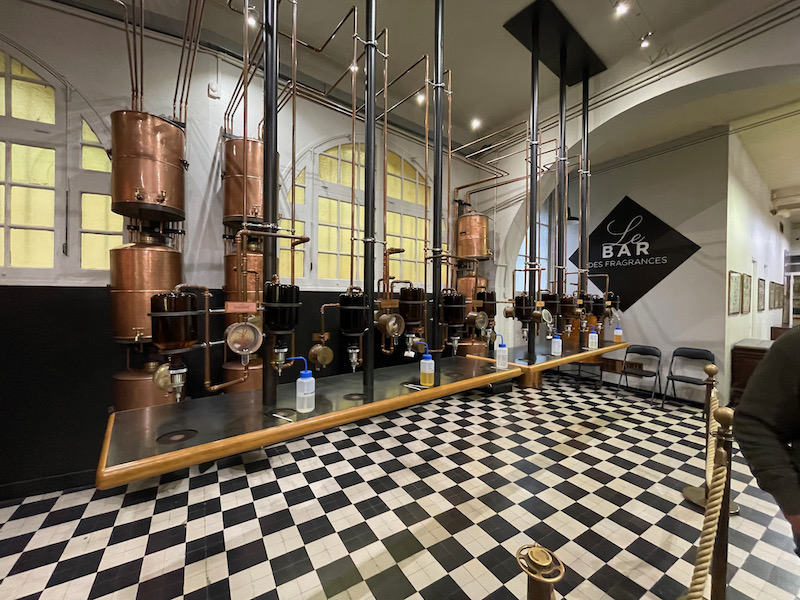
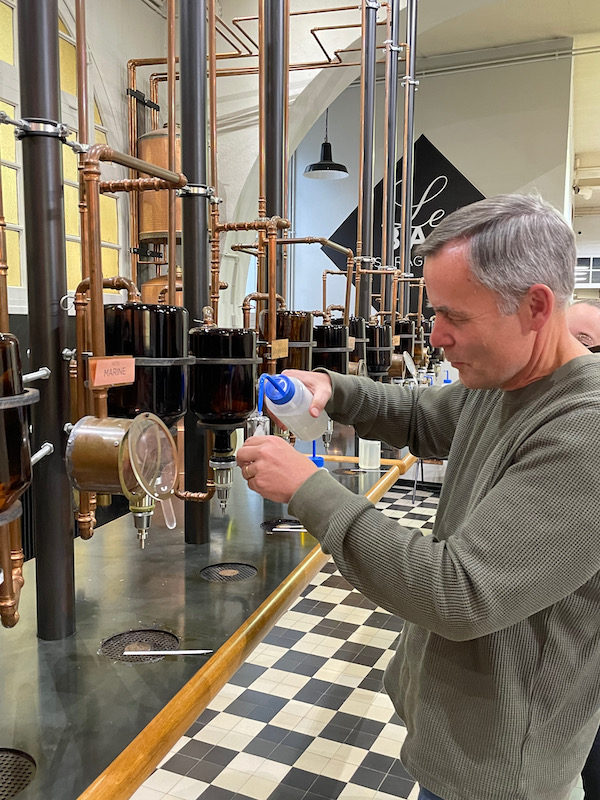
Then we did a quick tour of the town of Grasse, made even quicker because it was raining. We stopped at the Monument aux Morts, which was inaugurated in 1928.
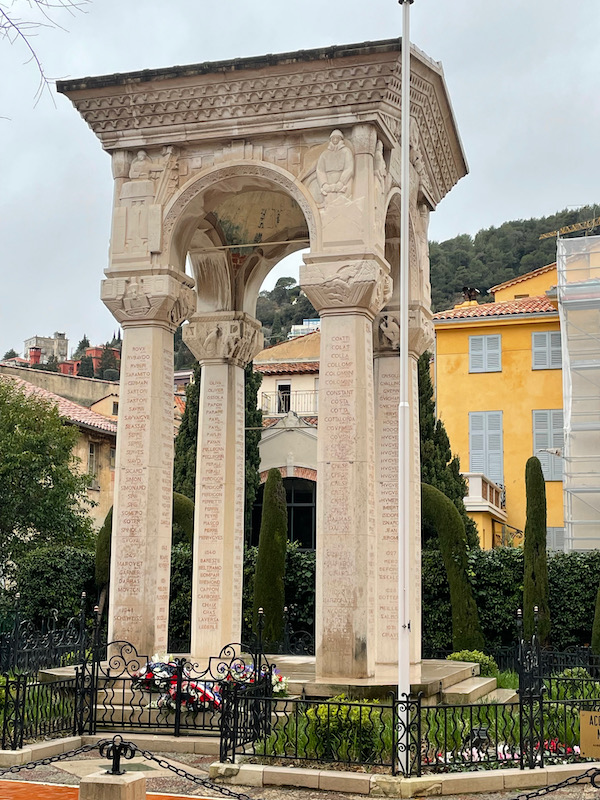
Then the Cathedral Notre-Dame-du-Puy, which was built in the 13th century. The nave has 12 cylindrical pillars, an evocation of the proclamation of faith of the 12 apostles. The walls are built in white limestone called La Turbie stone and the side walls are very thick, over 5 feet, to support the church without buttresses.
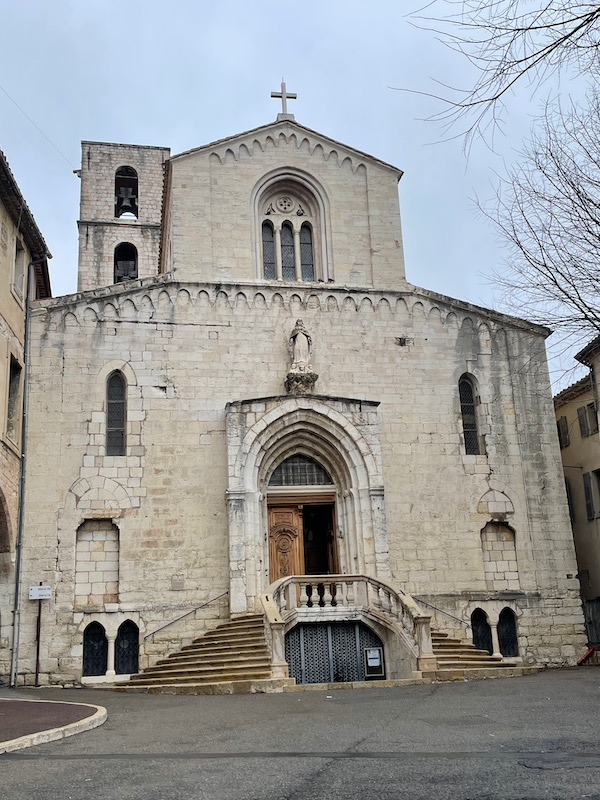
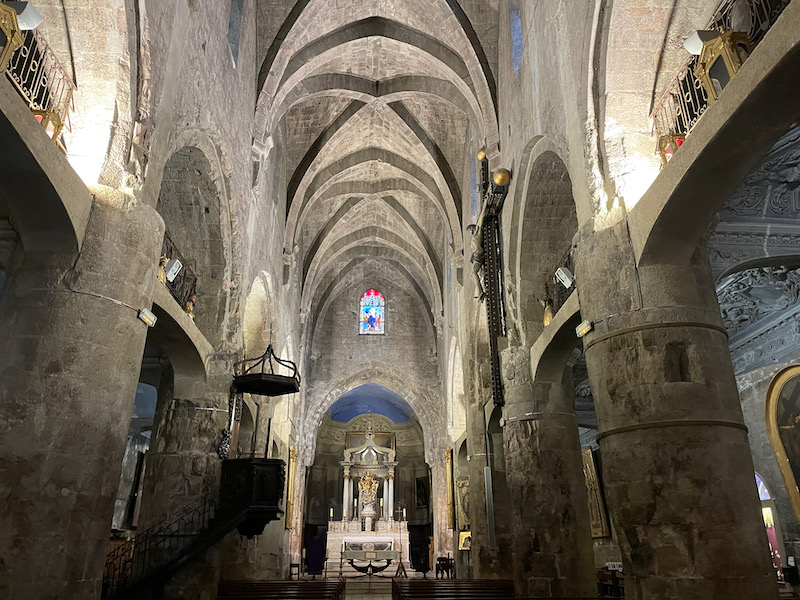
Just inside was the treasury with historical items from the 15th to the 19th century. This is the oldest piece, a wooden reliquary box that is sculpted and then painted. It holds the relics of Saint Honorat.
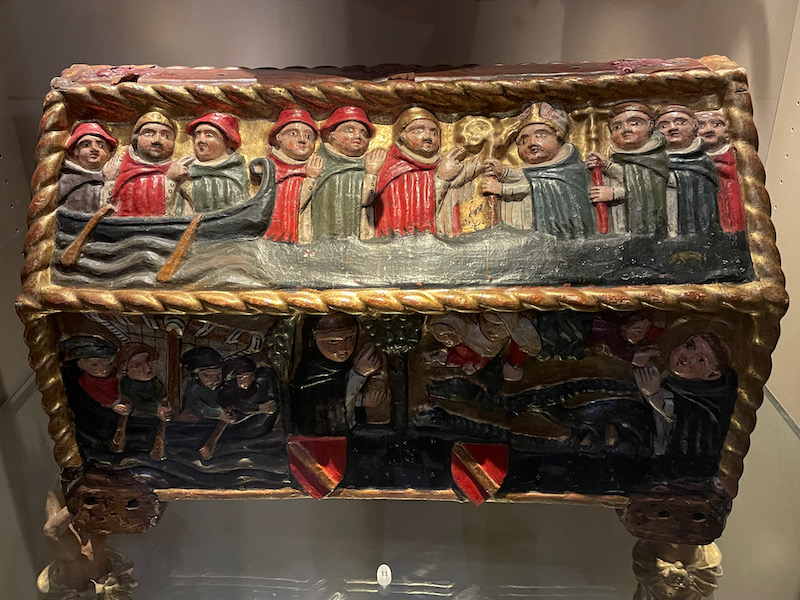
The altarpiece of the high altar dates to 1489.
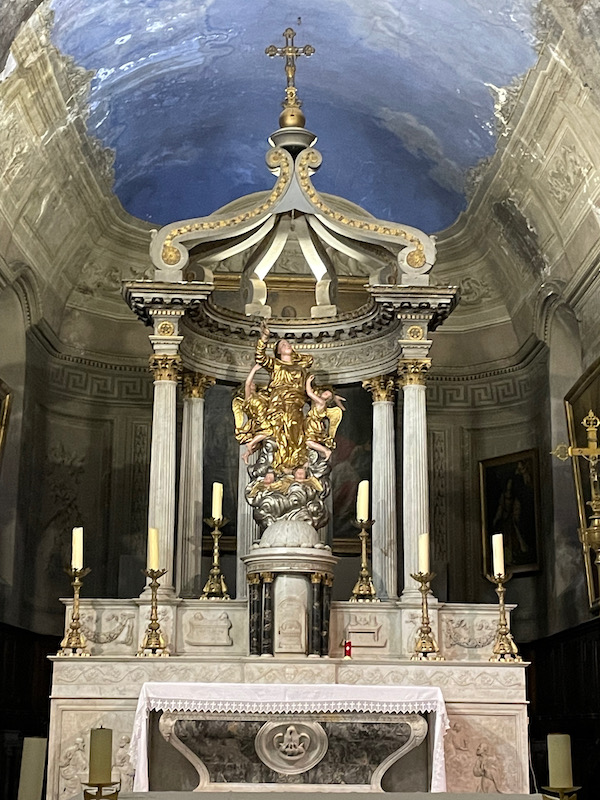
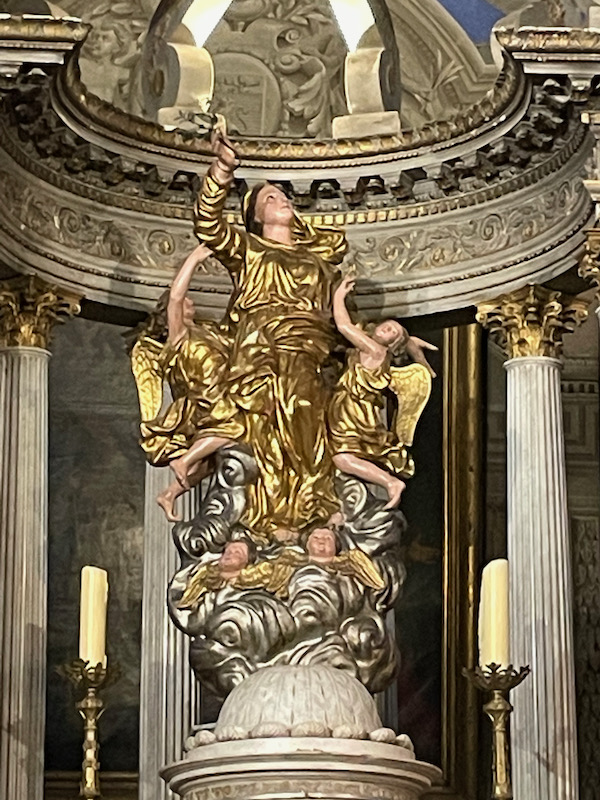
I don't know who created this, but I thought the use of the gilded frame to become "part" of the artwork piece was really interesting.
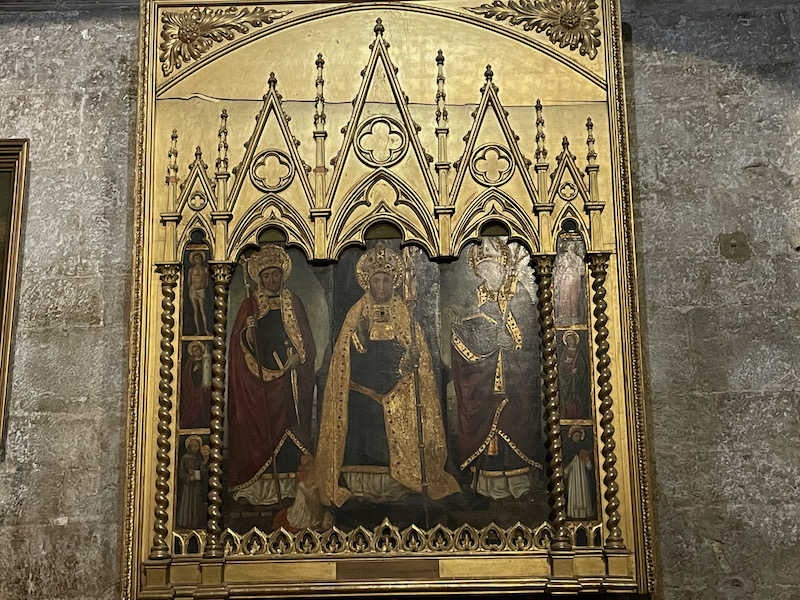
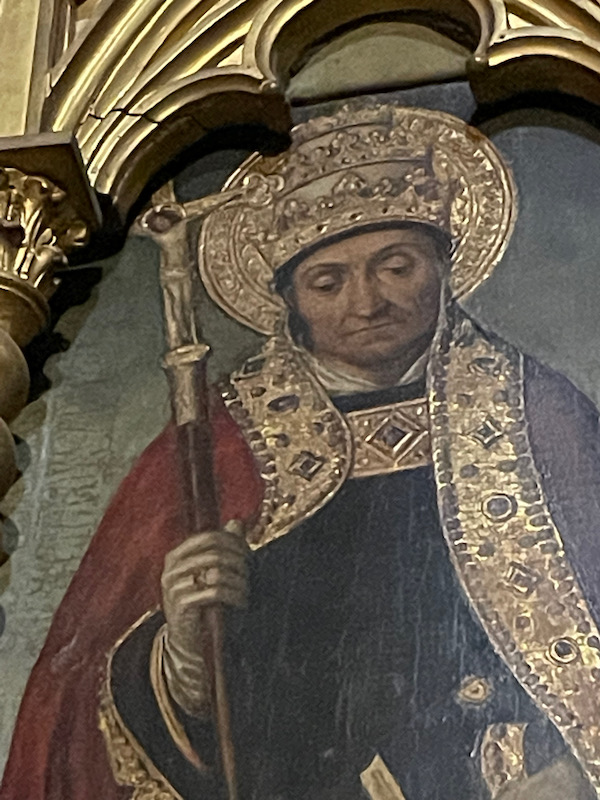
This side chapel is probably the best decorated within the church. It has a gorgeous gilded altarpiece with statues representing the four evangelists: Saint Matthew, Saint Mark, Saint Luke, and Saint John. Each is shown with the animal that symbolizes them: the angel for Matthew, the lion for Mark, the bull for Luke and the eagle for John.
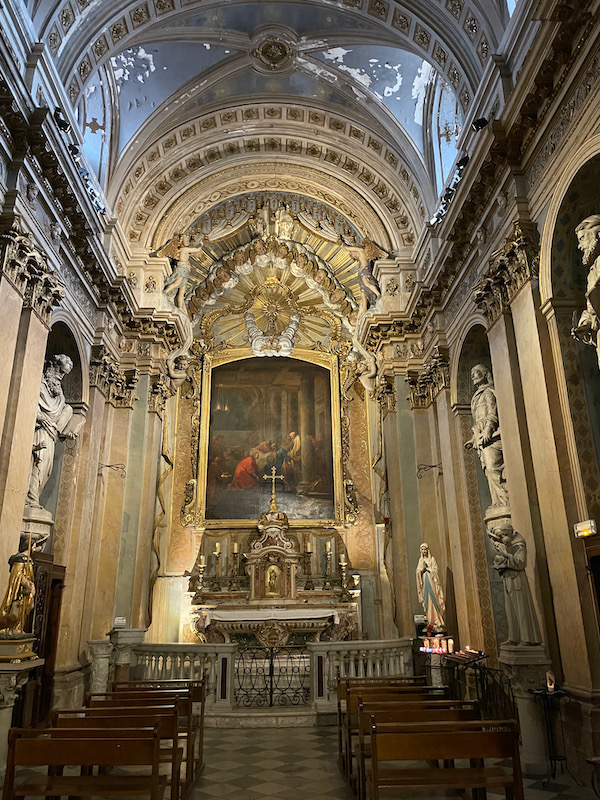
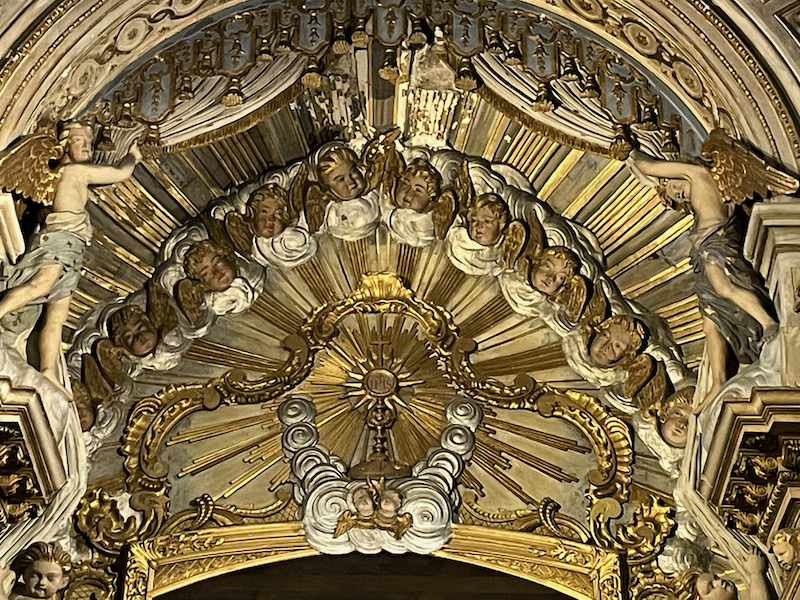
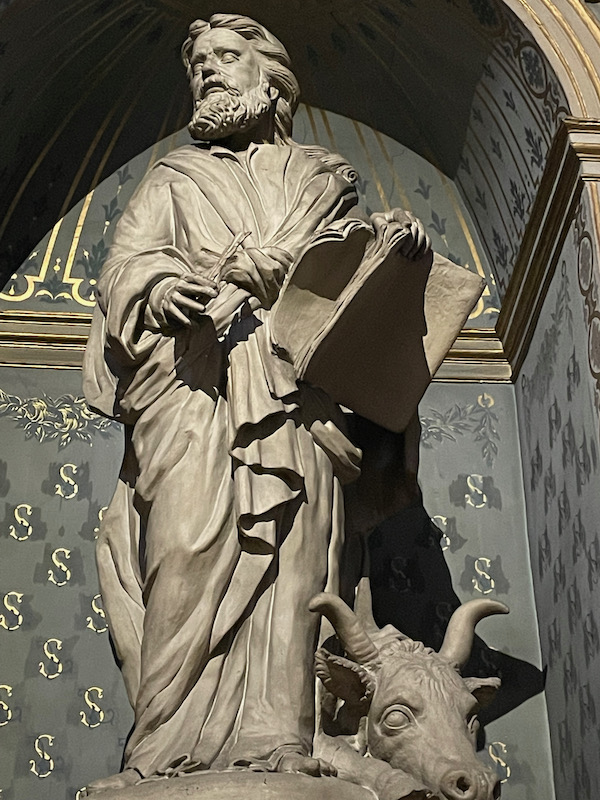
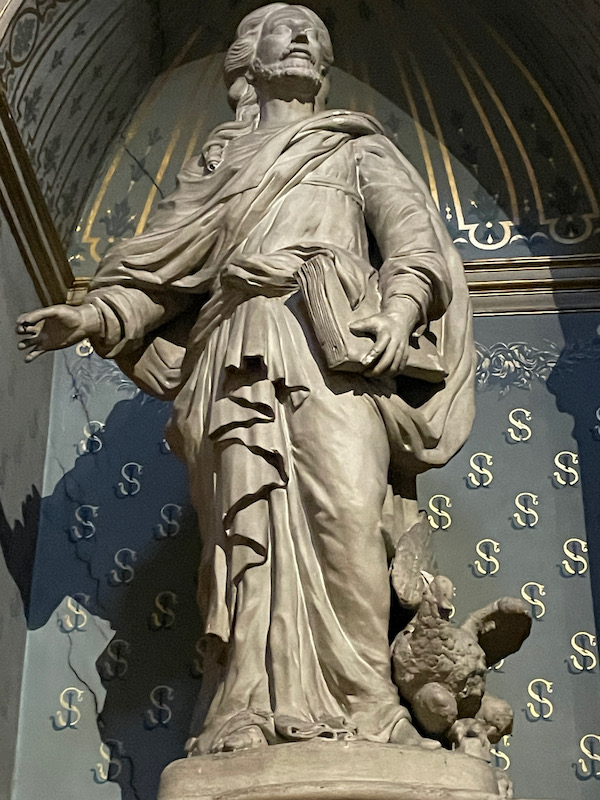
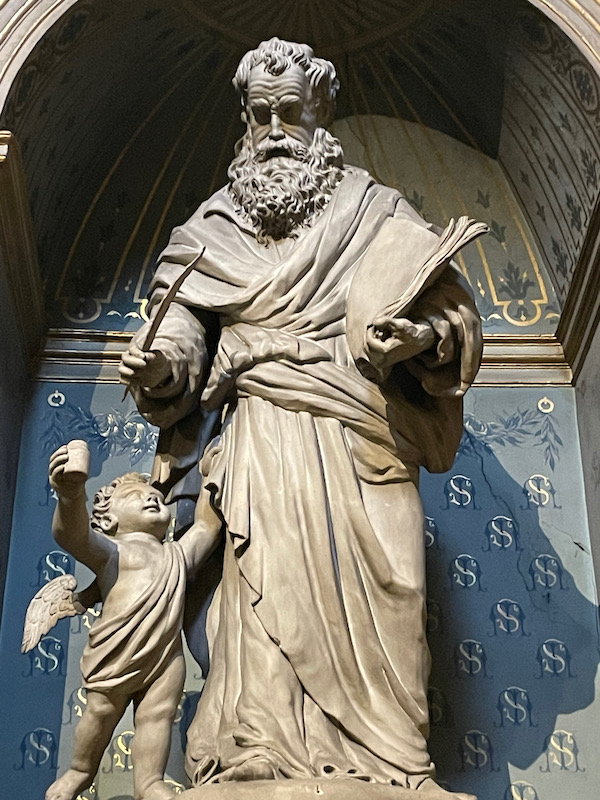
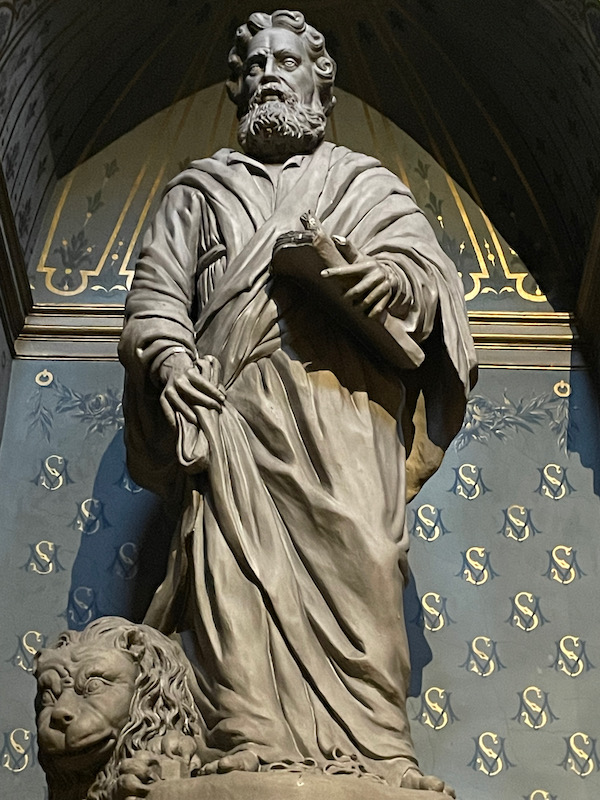
Since the building archives have been destroyed, the exact date of the construction of the Saracen tower (also called the Grimaldi Tower) is unknown. However, we do know that it was built shortly after the recapture of the region from the Saracens, which dates the construction from the 11th century. Many of these stones that were used in the construction were salvaged from old Roman buildings, and some still have inscriptions, cornices, or other Roman elements.
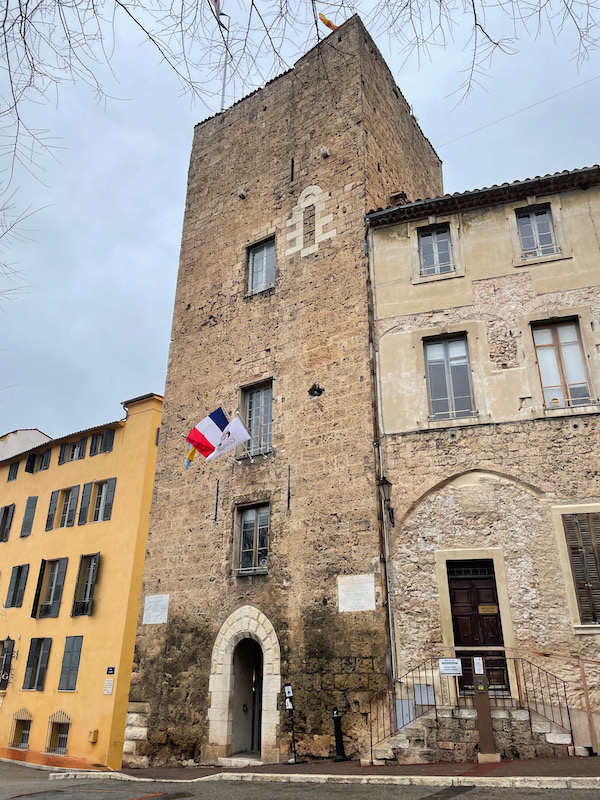
The Hôtel de Ville (town hall) is located inside a former episcopal palace with a beautiful tower, dating back to the 12th century. It has a fountain at the main facade, symbolizing the importance of the city in the fragrance industry.
